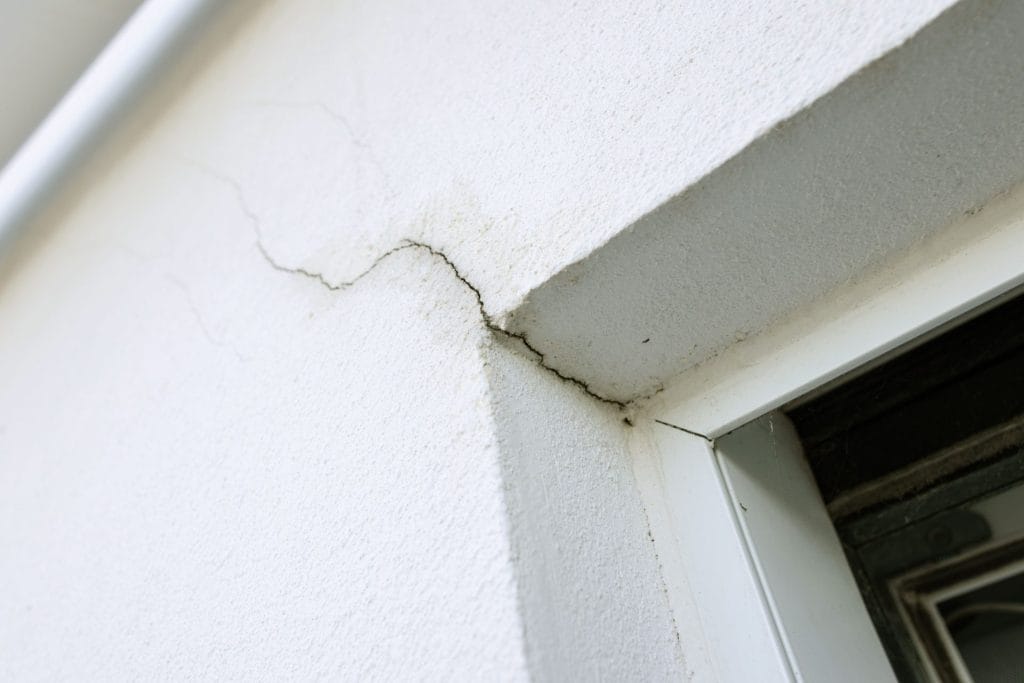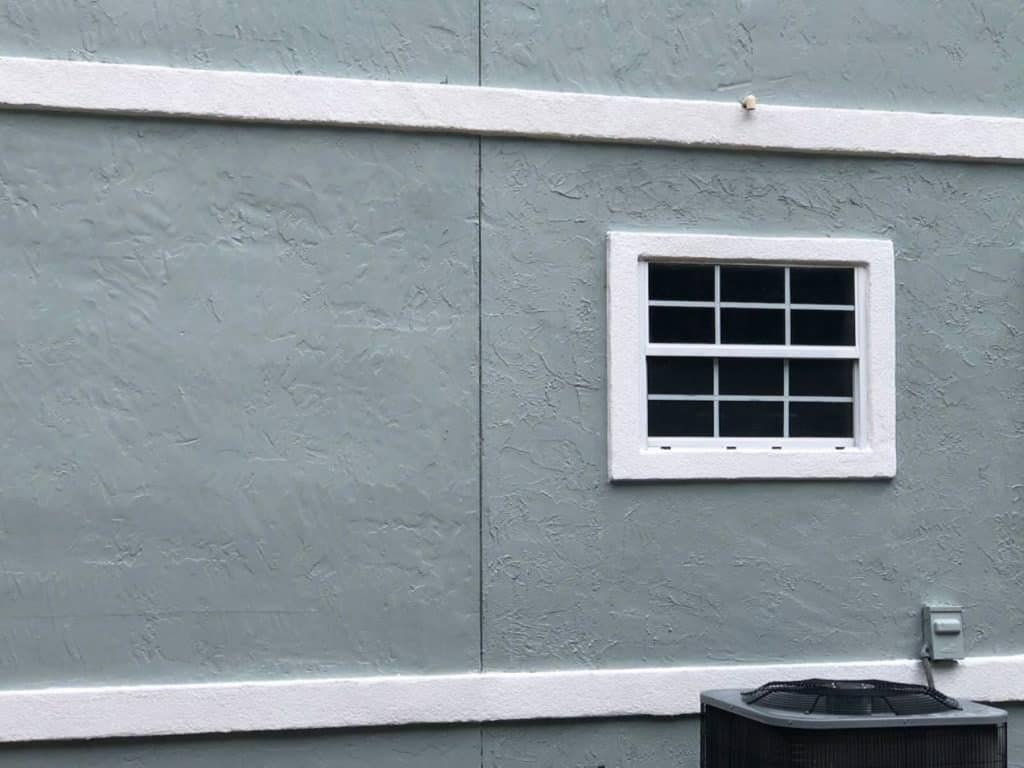Stucco, a popular exterior finish for homes, is known for its durability and aesthetic appeal. However, it is not immune to cracking, which can arise from various factors. One of the primary causes of stucco cracks is the natural settling of a building.
As a structure ages, it undergoes minor shifts and movements due to changes in soil conditions, moisture levels, and temperature fluctuations. These movements can create stress on the stucco surface, leading to cracks. Additionally, if the foundation of a home is not properly constructed or if it experiences significant settling, the stucco may also show signs of distress.
Another significant factor contributing to stucco cracks is moisture intrusion. Stucco is designed to be water-resistant, but if it is not applied correctly or if there are issues with drainage, water can seep behind the stucco layer. This trapped moisture can lead to mold growth and deterioration of the underlying materials, causing the stucco to crack and peel.
Furthermore, extreme weather conditions, such as heavy rain, hail, or freezing temperatures, can exacerbate these issues. The expansion and contraction of the stucco due to temperature changes can create additional stress points, resulting in cracks over time.
Key Takeaways
- Stucco cracks can be caused by various factors such as settlement, moisture, and structural movement.
- Different types of stucco cracks include hairline cracks, spider web cracks, and horizontal or vertical cracks.
- Hiring a professional stucco repair contractor is essential for identifying the root cause of the cracks and providing a long-lasting solution.
- DIY stucco crack repair techniques may include using caulk, patching compound, or stucco mix, but it’s important to assess the extent of the damage before attempting repairs.
- Preventing future stucco cracks involves proper maintenance, addressing water damage, and ensuring proper installation and curing of stucco.
Identifying Different Types of Stucco Cracks
Hairline Cracks: Minor Settling and Shrinkage
Hairline cracks are the most common type of stucco crack, typically measuring less than 1/16 inch in width. These cracks often occur due to minor settling or shrinkage during the curing process of the stucco. Although they may seem insignificant, hairline cracks can allow moisture to penetrate the surface if left unaddressed.
Structural Cracks: Indicators of Underlying Issues
Wider cracks, often referred to as structural cracks, can indicate more serious underlying issues. These cracks may be wider than 1/8 inch and can result from significant foundation movement or improper installation of the stucco system. Structural cracks often require immediate attention as they can compromise the integrity of the building.

Vertical and Horizontal Cracks: Clues to the Underlying Problem
Vertical and horizontal cracks can provide valuable clues about the nature of the problem. Vertical cracks may suggest settling issues, while horizontal cracks could indicate pressure from expanding materials or moisture-related problems. By identifying the type of crack, homeowners and builders can determine the best course of action for repair and prevention.
Hiring a Professional Stucco Repair Contractor
When faced with stucco cracks, many homeowners may wonder whether to tackle repairs themselves or hire a professional contractor. Engaging a professional stucco repair contractor offers several advantages. Firstly, experienced contractors possess specialized knowledge and skills that enable them to accurately assess the extent of damage and identify underlying issues that may not be immediately visible.
They can provide a comprehensive evaluation of the stucco system and recommend appropriate repair methods tailored to the specific situation. Moreover, professional contractors have access to high-quality materials and tools that are essential for effective repairs. They are familiar with industry standards and best practices, ensuring that repairs are performed correctly and efficiently.
This expertise not only enhances the longevity of the repair work but also minimizes the risk of future problems arising from improper techniques. Additionally, hiring a licensed contractor often comes with warranties on both labor and materials, providing homeowners with peace of mind regarding the quality of work performed.
DIY Stucco Crack Repair Techniques
| Technique | Materials Needed | Difficulty Level | Effectiveness |
|---|---|---|---|
| Simple Patching | Stucco patching compound, trowel | Easy | Temporary fix |
| Wire Lath Reinforcement | Wire lath, stucco mix, trowel | Moderate | Durable repair |
| Crack Injection | Epoxy or polyurethane injection compound | Advanced | Permanent solution |
For those who prefer a hands-on approach, there are several DIY techniques for repairing minor stucco cracks. One common method involves using a premixed stucco patching compound specifically designed for small repairs. To begin, homeowners should clean the area around the crack thoroughly to remove any loose debris or dust.
Once cleaned, they can apply the patching compound using a putty knife or trowel, ensuring that it fills the crack completely.
After smoothing out the surface, it is essential to allow adequate drying time as per the manufacturer’s instructions. Another effective DIY technique involves using caulk for hairline cracks.
A high-quality exterior-grade caulk can be applied directly into the crack using a caulking gun. Homeowners should ensure that they overfill the crack slightly before smoothing it out with a wet finger or a tool designed for this purpose. This method is particularly useful for small cracks that do not indicate structural issues.
However, it is crucial to monitor these repairs over time to ensure that they do not reopen or worsen.
Preventing Future Stucco Cracks
Preventing future stucco cracks requires proactive measures that address both environmental factors and maintenance practices. One effective strategy is ensuring proper drainage around the home’s foundation. Homeowners should regularly inspect gutters and downspouts to ensure they are functioning correctly and directing water away from the foundation.
Additionally, grading around the home should slope away from the foundation to prevent water accumulation that could lead to soil erosion and settling.
Regular maintenance is also vital in preventing stucco damage.
This includes inspecting for signs of wear and tear, such as peeling paint or discoloration, which may indicate moisture issues behind the stucco.
Promptly addressing any signs of damage can prevent more extensive repairs down the line. Furthermore, applying a protective sealant every few years can help enhance moisture resistance and prolong the life of the stucco finish.
Related: The Lifespan of Synthetic Stucco: How Long Does It Last?
Importance of Regular Stucco Inspections

Regular inspections of stucco exteriors are crucial for maintaining their integrity and appearance over time. These inspections allow homeowners to identify potential issues before they escalate into significant problems requiring costly repairs. During an inspection, homeowners should look for signs of cracking, discoloration, or bulging in the stucco surface.
Additionally, checking for areas where water may be pooling or where vegetation is growing against the stucco can help identify potential moisture intrusion points. Engaging a professional inspector can provide an added layer of assurance as they possess trained eyes for spotting subtle signs of damage that may go unnoticed by untrained individuals. A thorough inspection can also include checking for proper flashing around windows and doors, which is essential for preventing water infiltration.
By prioritizing regular inspections, homeowners can ensure their stucco remains in good condition and address any issues promptly.
Stucco Repair Permits and Regulations in Jacksonville, FL
In Jacksonville, FL, homeowners must be aware of local regulations regarding stucco repair work. Depending on the extent of repairs being undertaken, permits may be required before commencing any work on exterior finishes. For instance, if repairs involve structural changes or significant alterations to the building’s exterior, obtaining a permit from the city’s building department is necessary to ensure compliance with local building codes.
Additionally, understanding zoning laws and regulations specific to Jacksonville is essential for homeowners planning extensive renovations or repairs involving stucco. These regulations may dictate specific materials that can be used or require adherence to certain aesthetic guidelines in historic districts. Homeowners should consult with local authorities or a knowledgeable contractor to navigate these requirements effectively.
Finding the Right Stucco Repair Company in Jacksonville
Selecting a reputable stucco repair company in Jacksonville involves careful consideration and research. Homeowners should start by seeking recommendations from friends or family who have had similar work done. Online reviews and ratings on platforms like Google or Yelp can also provide valuable insights into a company’s reputation and quality of service.
Once potential contractors have been identified, it is essential to verify their credentials, including licensing and insurance coverage. A legitimate contractor should be able to provide proof of both liability insurance and workers’ compensation insurance to protect homeowners from potential liabilities during repairs. Additionally, obtaining multiple quotes allows homeowners to compare pricing and services offered by different companies before making a decision.
In conclusion, understanding stucco cracks involves recognizing their causes and types while knowing when to seek professional help or attempt DIY repairs. Preventative measures and regular inspections play critical roles in maintaining stucco integrity over time. In Jacksonville, navigating local regulations and finding qualified contractors ensures that homeowners can effectively address any stucco-related issues while preserving their property’s value and appearance.

If you’re dealing with stucco cracks in Jacksonville, FL, and seeking professional advice or services, you might find the article on “Top Stucco Contractors in Jacksonville, Florida” particularly useful. This article provides insights into selecting reputable contractors who specialize in handling stucco issues, ensuring that your repairs are done efficiently and effectively. For more detailed information, you can read the full article here.
FAQs
What causes stucco cracks in Jacksonville, FL?
Stucco cracks in Jacksonville, FL can be caused by a variety of factors including settling of the foundation, temperature changes, moisture infiltration, and poor installation.
How can stucco cracks be repaired in Jacksonville, FL?
Stucco cracks in Jacksonville, FL can be repaired by cleaning the area, filling the crack with a stucco patching compound, and then applying a new coat of stucco to blend with the existing finish.
Are stucco cracks in Jacksonville, FL a sign of a larger problem?
Stucco cracks in Jacksonville, FL can be a sign of a larger problem such as structural issues, water damage, or improper installation. It is important to have a professional inspect the cracks to determine the underlying cause.
Can stucco cracks in Jacksonville, FL be prevented?
Stucco cracks in Jacksonville, FL can be prevented by ensuring proper installation, using quality materials, and addressing any underlying issues such as drainage problems or foundation settling.
When should I seek professional help for stucco cracks in Jacksonville, FL?
It is recommended to seek professional help for stucco cracks in Jacksonville, FL if the cracks are large, recurring, or if there are signs of water damage or structural issues. A professional can assess the situation and recommend the appropriate repairs.
